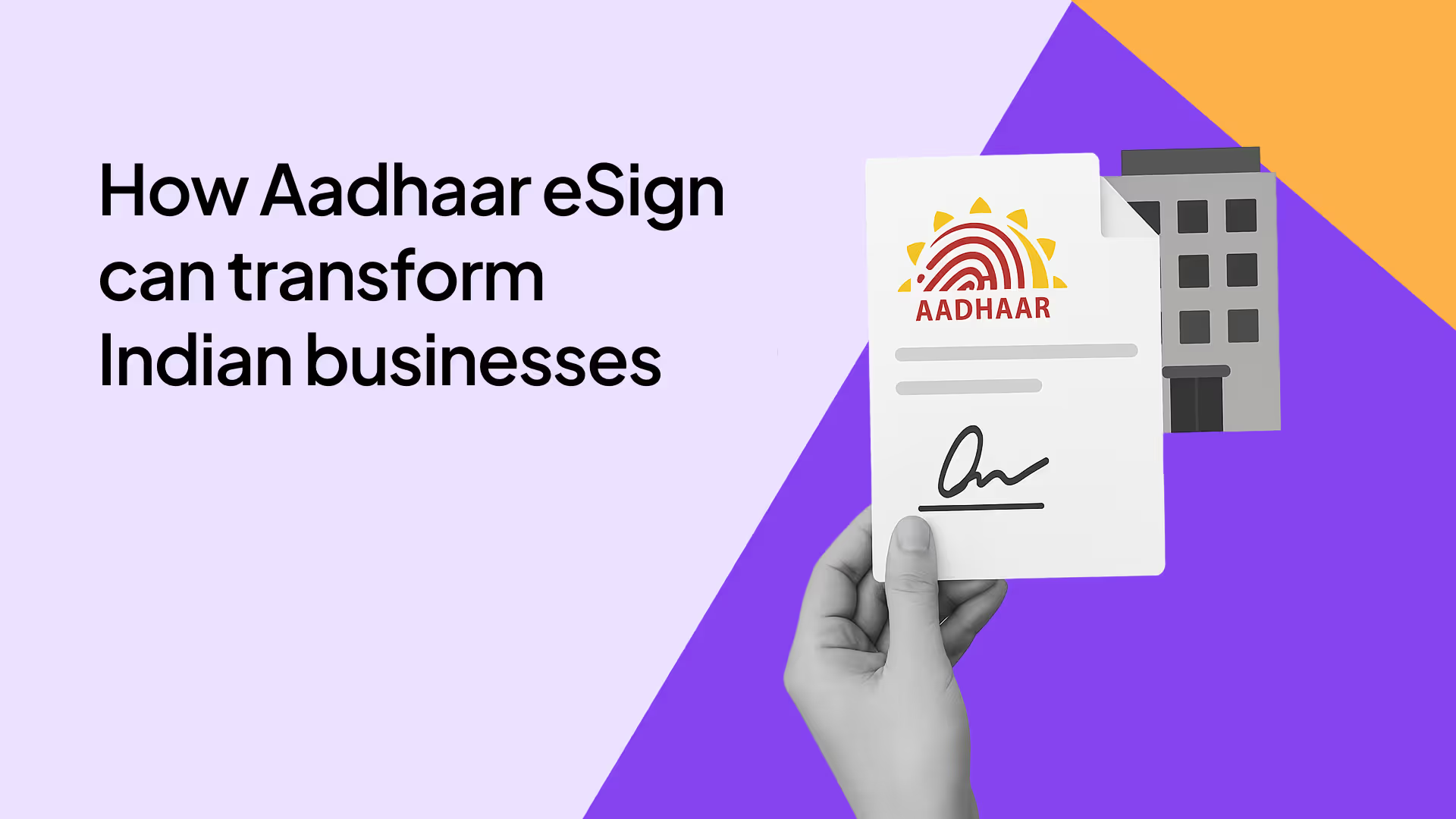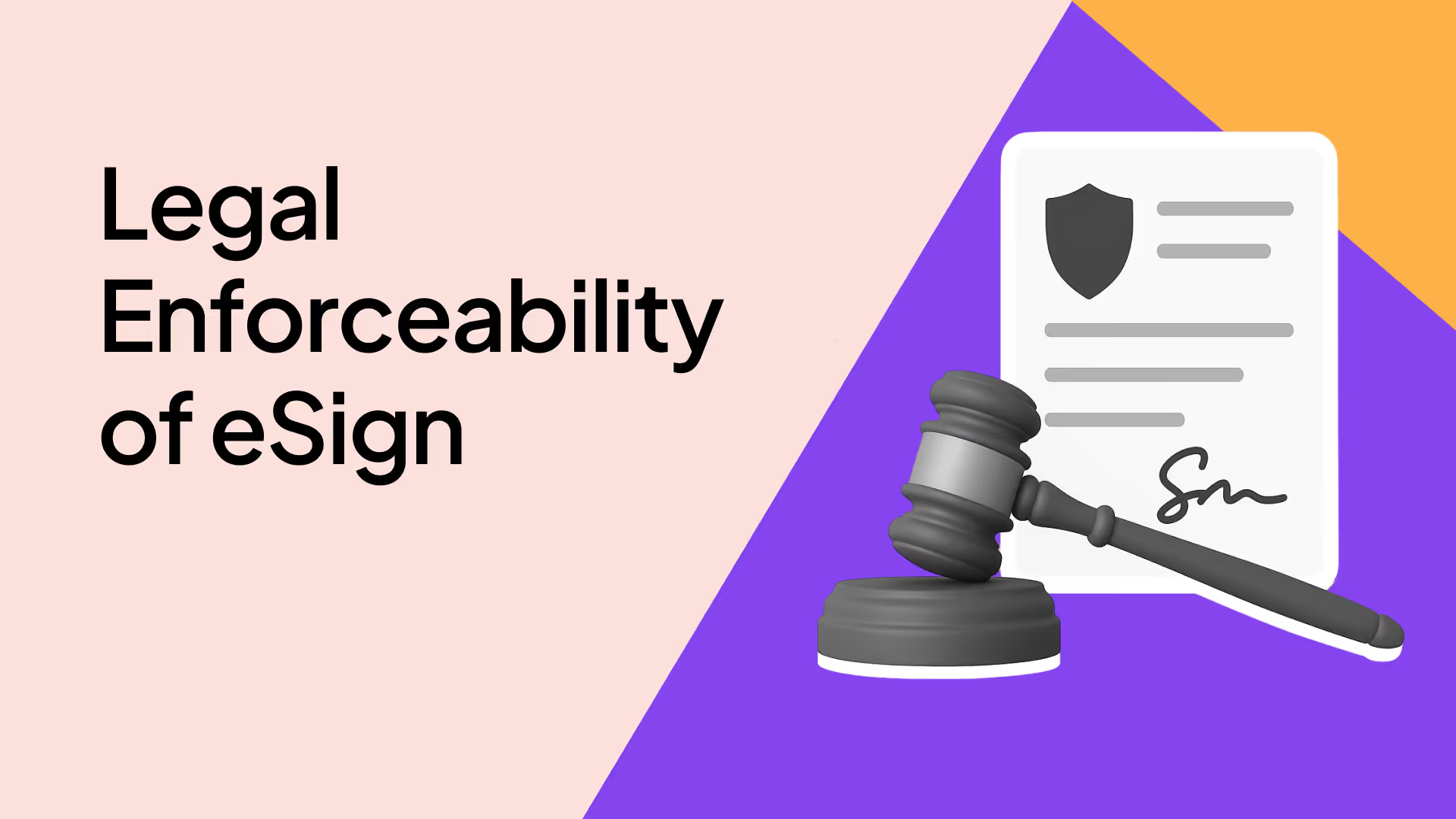Paperwork is one of the final frontiers of digitisation. Although a lot of key processes like KYC, customer communication, loan origination, etc. have been digitized, there are still significant areas of business that continue to deal with physical paperwork. But physical paperwork comes with high business costs, higher TAT, and terrible customer experience. Therefore, key industries like Banking, Financial Services, Manufacturing, Food & Beverage etc. are transitioning to digitization of paperwork.
When you decide to take your business digital, the first thing you will likely search for is an eSign solution. We have curated a 7 step checklist to help you make the right choice while choosing the best eSign Service Provider in India.
We’ve put together this handy guide for anyone searching for an “eSign solution” or “eSign service provider” for their business.
1. Your eSign solution should not be an eSign solution

You heard that right. To successfully digitize paperwork, a vanilla eSign solution is simply not enough. Contrary to popular belief, the paperwork execution process is NOT JUST an eSign process. eSign is a critical part of the process - but it’s only one step of the process.
In order to successfully digitize paperwork execution at scale in a compliant way - your business also needs to ensure:
- Digital document assembly and creation
- Compliant Digital Stamp Paper affixture
- Digital collaboration between teams involved in the paperwork process
- Accessible digital interface for your customers and vendor partners to sign documents digitally
- Powerful automation tools and services that ensure minimal manual intervention by your teams
- Prevention of signature fraud and agent fraud in the digital journey
All of these problems require digital infrastructure that go way beyond the ambit of a simple eSign solution. You need a complete Document Infrastructure suite to digitise each and every step of the paperwork process - from eSign to the steps mentioned above.
That being said, the Document Infrastructure solution you integrate will have an eSign suite. And that eSign suite needs to support the following critical requirements.
2. Business Continuity with multiple ESPs

ESP downtime means signing stops at the branch level - leading to branch overcrowding and frustrated customers
The most popular eSign in India today is the Aadhaar eSign. Aadhaar eSigns are issued on the fly by regulated entities known as “eSign service providers” or ESPs. However, ESPs sometimes face downtime. Therefore you need a fallback for those times when your primary ESP is unavailable. Ensure that your chosen solution can automatically switch between multiple ESPs to keep operations running smoothly.
3. All Inclusive eSign Options

All your signers won’t be able to use Aadhaar eSign. While Aadhaar eSign is the most popular eSign - not all signers can eSign using Aadhaar. This can happen for multiple reasons:
- Signers don’t have possession of their Aadhaar linked mobile
- Signers haven’t linked their Aadhaar to mobile or email
- Signers are uncomfortable using Aadhaar to eSign
- UIDAI servers are experiencing downtime
If you only offer Aadhaar eSign this leaves you with two terrible options:
- Revert to physical flows for “non-Aadhaar” enabled customers/vendor partners
- Don’t do business with “non-Aadhaar” enabled customers/vendor partners
There are 12+ legally valid non Aadhaar eSign options available in India today. Ensure you have as many options as possible to minimise drop offs and ensure maximum flexibility for signers you interact with.
4. Multilingual Support. - The eSign interface should be in a language the customer can understand

Only 10% of Indians can operate English interfaces. If your business only deals with urban elites in large cities then this is not an issue for you. But if you are a business with a wide customer base across Bharat, then this becomes a BIG issue for you.
If your eSign interface (instructions, buttons and consent) is ONLY in English, you will be unable to scale up your digital document flows because:
- Signers drop off because they can’t understand what’s happening on screen
- Signers ask for physical journeys
- Field and branch officers have to spend more time explaining things to signers
- Field and branch officers are themselves not comfortable with English - so they don’t use the digital tool you’ve adopted
- Regulators question the validity of consent you’ve collected
To avoid these problems, an eSign interface in local Indian languages is a must. It will helps your signers to build trust in the digital process, make life easier for your field force and keep regulators happy.
5. eSigning should work even in 2G/3G environments

We’ve taken 4G for granted in cities. However there are many pockets (even within cities) where network coverage is patchy. If your business deals with customers and vendor partners in such areas - you need to ensure that the eSign journey will work even in low bandwidth “2G/3G” environments. Otherwise be prepared for a frustrating experience
6. All parties must receive a Secure Audit Trail at the end of the journey
.avif)
eSigned documents must be 100% legally enforceable - beyond reasonable doubt. A Secure Audit Trail is a comprehensive digitally signed record of key details about the digital document journey like: timestamps, IP addresses, GPS/Face Capture, Signer details, method of sign, eSign Certificate details and more. The Secure Audit Trail must also be digitally signed itself by your Document Infrastructure provider - to attract presumptions of validity under S. 85B of the Evidence Act.
7. The eSign interface must be mobile friendly

An overwhelming majority of Indian Internet consumption is via mobile phones. That’s why your eSign interface must work buttery smooth on any mobile device.
Utilizing this 7-step checklist will help your business effectively incorporate eSign into paperwork processes in a scalable way that drives tangible business results. This checklist is crucial in making informed decisions for a smooth transition to digital paperwork, ultimately leading to a more efficient and customer-centric business.
If you’re interested in actioning this 7 step checklist right away - you can check out Leegality. Leegality Document Infrastructure is currently in use by 2000+ top Indian businesses - from large banks and NBFCs like Federal Bank, ICICI Bank, Bank of Baroda, Tata Capital, HDFC and others to high growth companies like Razorpay, Cars24, Yubi and others.





